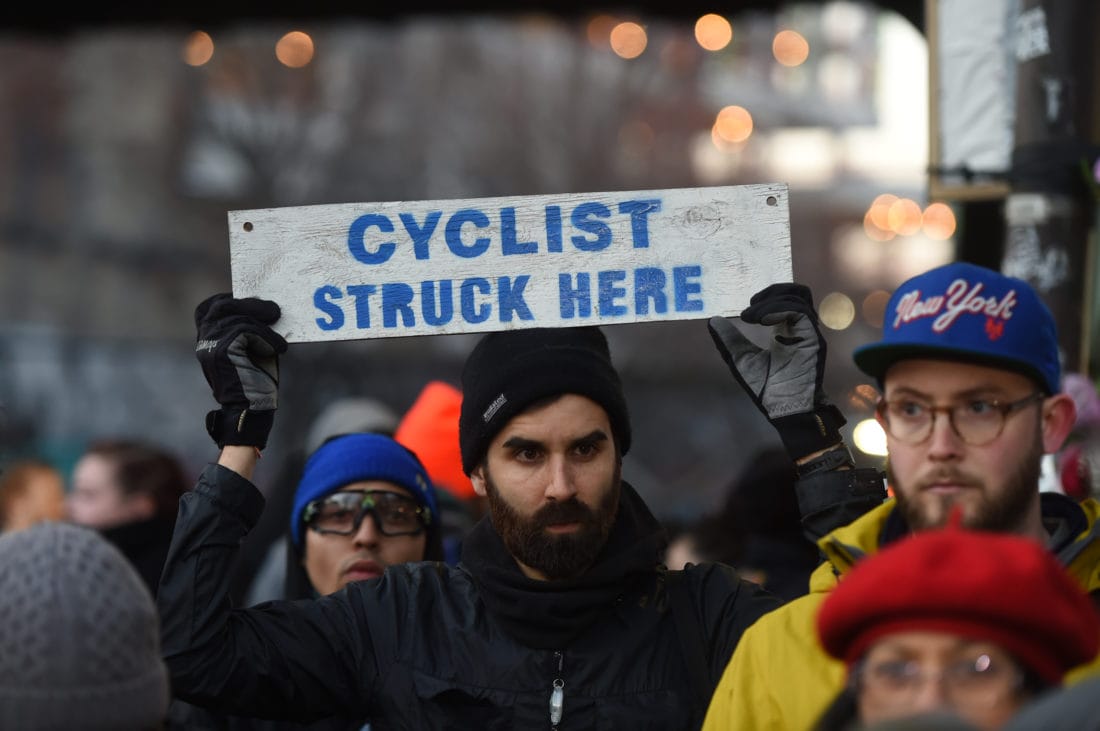Three Bicyclists Were Killed This Week In Brooklyn


CROWN HEIGHTS/MARINE PARK/BORO PARK – While Mayor Bill de Blasio is out campaigning for U.S president, cyclists are continuing to die in his city. The total number of cyclists who have died this year so far now totals 10. Meet 22-year-old Kenichi Nakagawa, 16-year-old Yisroel Schwartz, and 29-year-old Robert Sommer– all cyclists that were killed by vehicles just this week in Brooklyn.
On Saturday, May 11, at about 5:20 p.m., Nakagawa was biking on Dean Street and Brooklyn Avenue in Crown Heights. A 66-year-old man driving a 2012 Toyota Sienna was traveling eastbound on Dean Street, approaching the intersection of Brooklyn Avenue. The car’s front bumper struck the young man, forcing him to fall on the roadway. Cops blame the cyclist, who died from his injuries on Tuesday, May 14.
“The 22-year-old bicyclist disobeyed the steady red traffic light while riding southbound on Brooklyn Avenue, at the same intersection,” the NYPD said.
The driver remained at the scene and no arrests were made.
Then, a day later on Sunday, May 12, Robert Sommer was biking and crossing Avenue U near East 33rd Street in Marine Park at around 8 p.m. when a driver driving a Toyota Highlander struck the cyclist. The 29-year-old Sommer landed in the street with head trauma and was pronounced dead at the hospital.
The driver remained at the scene and no arrests were made.
On Wednesday, May 15 at about 5:40 p.m., 16-year-old Yisroel Schwartz was biking north on 17th Avenue near 53rd Street in Boro Park. He was “doored” by driver getting out of a car, knocking him into the street and where he was struck by a 2013 Econoline E350 heading north. He was taken to Maimonides Hospital and was pronounced dead.
Both the van and car drivers remained at the scene and no arrests were made.
According to Hamodia, Schwartz was a tenth grader attending Yeshivas Novominsk. According to the Daily News who spoke to the driver of the van, he was very shaken. “I didn’t see him, to be honest,” the driver told the Daily News. “It was an accident.”
The three deaths bring the number of cyclists who have been killed in the city to 10 – same number that were killed in all of 2018, say activists from Transportation Alternatives.
Just two months ago, 25-year-old bike messenger, Aurilla Lawrence was killed by an 18-wheeler who struck her and left the scene in Williamsburg. In April, 26-year-old Pedro Tepozteco was riding his bike on 47th Street in Boro Park when a truck’s rear tires struck him, killing him in the process.
In fact, just the first week of 2019, brought two cyclist deaths in the borough. 26-year-old Hugo Garcia was the first biker that was killed in 2019. He was riding his bike when a taxi driver opened the car’s door in his path. Hugo was thrown into oncoming traffic, where a 2013 Nissan hit and killed him. On January 4th, 41-year-old Hector Ayala Jr. was riding his bike just a block away from his home when a van struck and killed him.
“While the City’s approach to reducing fatalities has yielded real results over the past five years, it is abundantly clear that the scattershot, one-off approach to Vision Zero has reached a point of diminishing returns, and New Yorkers are dying as a result. We need a new, systemic approach to Vision Zero that makes safety a matter of course, not subject to the whims of parochial community board politics,” Thomas DeVito, TransAlt’s Senior Director of Advocacy said.
“Every time a simple street redesign takes two years to implement — like Amsterdam Avenue in Upper Manhattan — it is a leadership failure. Every time a safety improvement is removed or indefinitely delayed — like Dyckman Street or Queens Boulevard — or is preemptively watered down — like the recently announced Bay Ridge bike plan — because of fears over blowback from a small group of drivers, it is a leadership failure. And New Yorkers pay for these failures with their lives.”
DeVito then called on the City Council to pass the Vision Zero Street Design Standard and called on the Mayor to “ensure that standard is met every time a street is redesigned.”
“This means a complete network of protected bike lanes, “daylighted” corners at every intersection, ensuring more visibility and fewer vehicles obstructing pedestrian and bicyclist right of way,” DeVito said, “and a pilot program with more automated enforcement cameras to shield bike lanes from dangerous double parking, protect intersections from chronic blocking, and ensure that pedestrians who are using the crosswalk are not impeded upon by reckless turning vehicles.”



